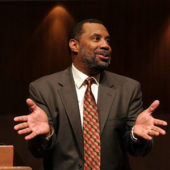A terminal diagnosis, a spouse files for divorce, a child turns his back on God, and a man loses his job—all moments of despair that seem dark like Good Friday.
From palm branches waiving, people shouting, “Hosanna” during the triumphal entry of Jesus into Jerusalem, to the night Jesus was betrayed and later hung on the cross, much changed for His followers. Elation gave way to despair. The Christ suffered and was put to death. What must the witnesses thought?
Did they give in to momentary despair? Or did they try to remain optimistic, recalling the prophetic words of Christ and the Scriptures? In the natural, all appeared to be lost. The cup of suffering was not removed.
Philip Yancey, in his book, , points out that when Christ gave breath to his last words, “My God, My God, Why have you forsaken me?” He used the word, “God” instead of “Abba” or “Father”. Christ felt abandoned from the Father during His darkest hour.
When tragedy strikes, that same sense of momentary abandonment is felt. But in the spiritual realm, the darkness of Good Friday eventually gives way to the light of Easter morning. Yancey says, Easter holds out the promise of reversibility. Destruction and even death can be reversed because of what Christ accomplished on the Cross. Easter is the starting point. It is a preview of an ultimate reality. Our present lives are the contradiction of what is to come.
Easter brings hope. If God could do what He did on Easter, then what more does He have for us eternally? Easter is a glimpse of eternity.
Yancey points out that the physical scars Christ suffered remained on His transformed body as a reminder that painful memories may never completely go away, but the hurt of those scars eventually will. As we rebuild our lives from devastating times, remember that Holy Week reminds us that someday, we all get a new start. Tears will be gone.
Suffering will be no more.
And that is the hope of the Resurrection.


















